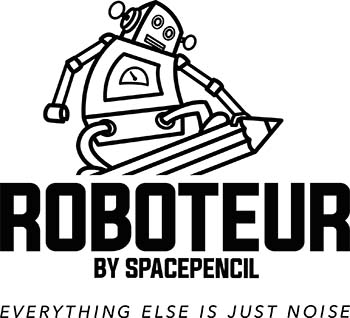Artificial intelligence (AI) is adding new functionality and dimension to processes including document processing, application development, and understanding unstructured data sources.
Saucecode, developer of the home-grown Roboteur RPA (robotic processing automation) platform is helping customers achieve and surpass their business goals by using AI tools.
 Chief technology officer Barry Buck is scrupulous about ensuring that any AI processes are well-defined, secure, and perform correctly.
Chief technology officer Barry Buck is scrupulous about ensuring that any AI processes are well-defined, secure, and perform correctly.
“Because Roboteur is an extendable platform, we are able to integrate AI tools as soon as we have tested and validated them,” he says.
The Roboteur team is employing AI to write new code, as well as to develop AI-led processes for customers. “Once we integrated AI as a tool in the decision centre, the processing and decision-making steps in workflow come naturally.
“The next innovation will be an AI-native way of building new workflows – where the user can simply type in a prompt and Roboteur will create the workflow.”
The integration of AI has been relatively seamless, Buck adds, because the Roboteur toolbox is essentially an agent-ready environment. “We already have a lot of automation that is battle-tested and ready to be used by an agent.
“And, because it’s a secure environment, agents can analyse and iterate as much as they need to without any risk to the customer,” he says. “Even with terabytes of data to query, the agents will use the Roboteur tools to create prompts and get to the required insights.”
On a practical level, how this has played out for customers is in improved workflows, quicker results, and improved productivity.
In one instance, a customer is using AI to interpret emails. “Previously, staff members had to use standardised subject lines for emails to be picked up by the workflow,” Buck explains, “Now, AI can monitor mailboxes for unstructured data, so human intervention is no longer needed.”
Similarly, not every spreadsheet conforms to strict layout or naming conventions. “But, using AI, we can ensure that automation still happens,” says Buck. “If columns are swopped around or named differently, AI can contextualise the data and fix the formatting automatically.”
These improvements to document intelligence might sound simple, but they are allowing a level of automation in both structured and unstructured documents that just wasn’t available before.
“AI is adding longevity to systems, and future-proofing many of the processes that could have been at risk,” Buck explains. “It is elevating traditional OCR (optical character recognition) or office automation to something much more fluid and dynamic.”
As the Saucecode team develops new AI features, all its customers get the benefits. “As we develop secure AI tools, we are integrating them into Roboteur, so all our customers get access to them. Because we built the system to be open to new technology, we are able to use AI to add functionality almost on the fly.”
Buck explains that the Roboteur system is based on open source software, so it’s easy to integrate with customers’ existing enterprise software. “If new technology comes along, we simply unplug the old and plug in the new one. None of the churn happens in the core.”
And these AI improvements are happening a lot more frequently since the Roboteur team is also using AI to develop new features.
“Having AI-assisting coding tools allows us to create extensions much quicker and more cost-effectively than before,” says Buck. “The developers love AI, and they love how they can add new features to Roboteur.”
Into the future
AI is driving a renaissance in the automation and document management environment, adding new functionality and intelligence.
“We are seeing great results from AI in scoping, solutions development, costing, implementation, and payload,” explains Buck. “Indeed, AI enhances every step of the process – from scoping the problem to its resolution. And it is proving hugely beneficial in terms of costs, time, and ability while removing human error across processes.”
The technology is also helping developers to be more productive – although Buck doesn’t believe it is going to replace them any time soon.
“We still need developers, still need to provide guardrails, to check code, and to eliminate hallucinations,” he says. “So the main focus of the job might change to more of a coding business analyst, but we are not going to replace developers in the short- or medium-terms.”
As AI becomes more prevalent, Buck believes we will see a lot more AI-native user experiences proliferating and many of these could be actioned on the fly.
“The way people interact with software is going to change dramatically over the next five years,” he says. “In fact, it already has, but this will accelerate as we address issues like hallucination, governance, ideas, and models.
“Hardly a day goes by when we don’t see a new feature or product that excites us.”
Of course, no technology is a silver bullet, and Buck warns that new innovations almost inevitably leads to more complexity.
“AI is still in the hype phase, but it is rapidly become more practical and realistic, and it is going to change the way we use technology.”
 For more information about Roboteur, visit www.saucecode.tech
For more information about Roboteur, visit www.saucecode.tech
